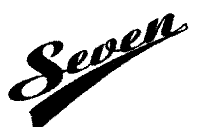Een niet te negeren element
Gerecht EU 22 mei 2012, zaak T-179/11 (Sport Eybl & Sports Experts tegen OHIM)
 |
 |
Gemeenschapsmerkenrecht. In de oppositieprocedure komt aanvrager van het beeldmerk SEVEN SUMMITS (in blauw en rood) houdster van het beeldmerk SEVEN en 7SEVEN tegen. De oppositieafdeling wijst de oppositie toe, het beroep wordt verworpen. Middel: ten onrechte is verwarringsgevaar aangenomen.
Het Gerecht EU wijst de klacht af. Een deel van het merk is identiek, een deel is gelijk, daarover is geen strijd. Het element SEVEN is een niet te negeren element voor de beoordeling van de algehele indruk.
23 The Board of Appeal found, correctly, that the goods in question were in part identical and in part similar; moreover, that finding was not disputed by the parties.
44 It follows from the foregoing that the Board of Appeal was right in finding that there is some overall similarity between the marks at issue, principally owing to the presence in those marks of the word element ‘seven’, which is not a negligible element in the overall impression made by either of the two marks.
62 Taking into account the interdependence between, on the one hand, the fact that there is some overall similarity between the signs at issue (see paragraph 44 above) and, on the other, the fact that the goods in question are in part identical and in part similar (see paragraph 23 above), the Board of Appeal was able to uphold, correctly, in paragraph 20 of the contested decision, that a likelihood of association, which is encompassed by the likelihood of confusion, could not be ruled out between the two signs. Since the common element ‘seven’ constitutes the principal element of the earlier mark and has a distinctive autonomous position in the mark applied for, the overall impression made by the mark applied for may lead the relevant public to believe that the goods at issue, at the very least, come from economically linked undertakings. That conclusion holds true even if the goods in question were to be considered as being generally on display to the consumer, since the impression of an overall similarity between the signs at issue still remains apparent for the latter.





















